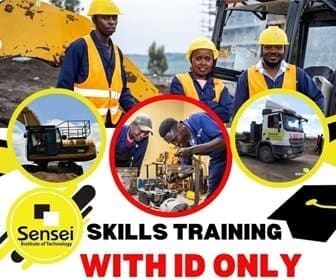
CHICAGO — “Africans unite to save Norwegians from dying of frostbite.” That’s the tagline of the fictional fundraising campaign “Radi-Aid.” The campaign, supposedly sponsored by concerned Africans, comes with all the trappings of the charity industry: snapshots of the suffering, branded T-shirts and an uplifting music video. The associated song — all vibrato and platitudes — asks Africans to collect and send radiators to the northern hemisphere.
“Why should we ignore cold people?” asks the fictional rapper Breezy V. “People don’t ignore starving people, so why should we ignore cold people? Frostbite kills too.”
The video comes from the Norwegian Students’ and Academics’ International Assistance Fund, a development organization in Norway that deploys funding and technical assistance to young people in Zambia, Zimbabwe and South Africa as well as Bolivia and Nicaragua. Its comedy, of course, is that Norway consistently tops global rankings of human development (and that the African chorus in the video struggles with the cold). The tragedy is that even if the worst conventions of development assistance can be mocked, they still persist.
Plenty of ink has been spilled over the pitfalls and pratfalls of aid to Africa and other less developed regions of the world. The Nigerian-American author Teju Cole updated the phrase the “white man’s burden” to the “white savior industrial complex,” an accurate descriptor for philanthropic cluelessness and waste, like ineffectual condom-distribution drives in India or “buy-one-give-one” shoe-selling schemes.
Aid campaigns implicitly promise guilt reduction and ego inflation for donors.
The Radi-Aid video a play on Live Aid, a seminal musical aid campaign pokes fun at the very process of international charity. It makes the shrewd viewer ask: Who will receive the donations? What if the radiators break? Is this a long-term strategy to fight frostbite? Is frostbite the core problem anyway?
This is a smart way to question whether assistance to populations in Africa — in the form of pharmaceuticals or water wells or even underwear — is more about making donors look good than about doing good for the needy.
Some of the incentives for bad aid are built in. Most charities must flog for funding to stay afloat, which creates a market for proof of suffering rather than proof of strength. Well-fed and well-schooled young people in poor countries don’t sell T-shirts.
Some of the incentives are purely emotional. For the privileged, it feels great to host a food drive for a distant crisis. But sending gifts in kind — like old clothing, canned goods or radiators — can be counterproductive. In the aftermath of Hurricane Sandy in the United States, for example, the Red Cross and other relief agencies reminded would-be altruists to send cash rather than diapers, clothes and preserved food to allow local responders to buy the items that were most needed.
The same logic applies to African economies. Local procurement could help blunt the economic impact of a humanitarian crisis, but more often foreign assistance ignores this by design. During the 1983-85 famine in Ethiopia that launched Live Aid, the planes full of grain that were sent from the West to hungry populations undermined East African food producers.
Aid campaigns implicitly promise guilt reduction and ego inflation for donors. The grinning Radi-Aid singers perform the same sleight of hand, selling scenes of snow, and their own exuberance, as a reason to pitch in.
More subtly, the video recalls “Kony 2012,” a slick short film produced by Americans about the Lord’s Resistance Army in Uganda that broke records for viral views. The film is the most recent and prominent of Africa-framing fictions produced by nonprofit organizations. Some call the genre “poverty porn,” others call it marketing. Whatever the name, it relies on giving a narrow impression of a person or place from a vast, diverse continent. Such “assistance” turns extraordinary hardship into an ordinary event and ignores the ordinary folks just getting by, or better.
The Radi-Aid stunt parries this trend effectively. Its creators remind viewers of the limited portrait they are painting. The site asks: “Imagine if every person in Africa saw the ‘Africa for Norway’ video and this was the only information they ever got about Norway. What would they think about Norway?”
They would think Norway is cold. (I hear that it is.) But it is other things as well.
Source:latitude.blogs.nytimes.co
Black Man’s Burden.
By DAYO OLOPADE
Africans fundraise To Save Norwegians From Dying Of Frostbite






